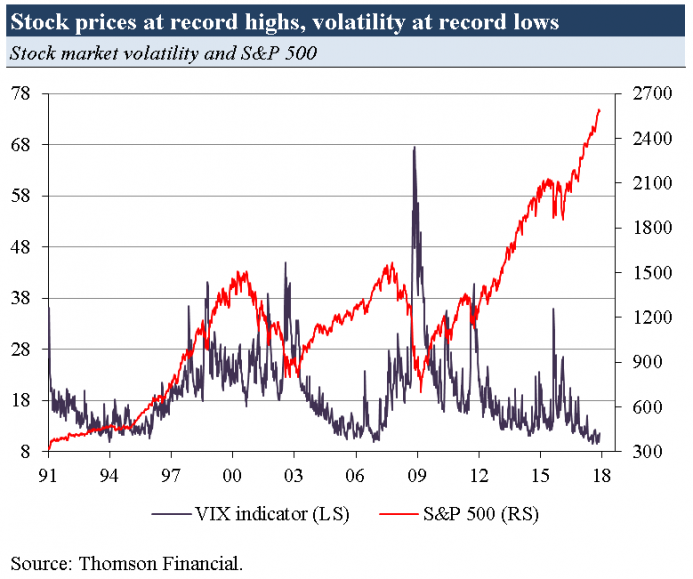A view from America …
“The gold standard is a modern, digital, information-sharing, global operating standard. Moreover, it is a stable, networking, efficient, price transmission system in the form of a stable international monetary standard,” says Lewis E. Lehrman.
Big media is paying attention to proposals for a new Gold Commission. This concept first was floated by Kentucky Senator Rand Paul and reported by The Weekly Standard. A Gold Commission then was proposed by former House Speaker Newt Gingrich as part of his (winning) campaign for South Carolina. Lehrman (with whose scholarly institute this writer professionally is associated) was mentioned in both instances.
Rep. Ron Paul — now campaigning for president, in large part, on the gold standard — and Lehrman both served on the Reagan Gold Commission. The Commission met well before the good Dr. Milton Friedman distanced himself from the theory known as monetarism. Following a theory much in vogue the majority of the Commission endorsed the paper standard. Dr. Paul and Mr. Lehrman filed a minority report calling for the restoration of a stable dollar defined by law as a certain weight of gold: the gold standard. Republished, The Case for Gold remains readily available from the Mises Institute and the Cato Institute.
The gold standard is no atavism, neither clipper ship nor ox cart. Under the gold standard we will have checking accounts and credit cards and currency, not carry around purses filled with gold coins to make our daily purchases. Legal gold convertibility simply kept, and will again keep, the dollar’s value stable over time. There is as much gold per capita now as there was at the height of the classical gold standard; claims that there is “not enough gold” betray a deep ignorance of the workings of the system.
There are a lot of reasons for taking gold seriously, now. Here are three:
1. The gold standard is Constitutional money; paper is not. The Constitution contemplated money defined as precious metal. As delegate George Read observed at the Constitutional Convention, the power to issue paper money was seen “as alarming as the mark of the Beast in Revelations.”
2. The gold standard will control spending. Congress will spend every cent it can get its hands on. To constrain it we must cut off its access to money. There are only three ways in which it can get its hands on material amounts our money: taxing, borrowing and printing. We must keep up the fight on taxes and borrowing. But the most pernicious way of getting our money is by “printing” it. The gold standard locks away printing press money.
3. The gold standard creates widespread prosperity. As historian Brian Domitrovic wrote:
there is the record of 1878-82 and its own run of some 40% growth. In the four years prior, there had not been a historic collapse in economic growth that made the base year of 1878 low, as was the case in 1933. Rather, in the four years before 1878, growth had come in at 13%; in the previous ten years, growth had totaled 49%. In other words, 1878-82 was a mega-acceleration from a high base.
And after? Over the next decade, another historic expansion of 49%. 49% on top of 40% on top of 49%, 1868 to 1892. That’s registering “the strongest output growth…in US history outside of wartime.”
Regarding policy, there was one major shift that occurred in these heroic years in the latter 19th century. In 1879, the U.S. went back on the gold standard.
“A modern, digital, information-sharing, global operating standard,” says Lehrman. Let’s boot up that commission and take a really close look as to how gold might be the “golden bullet” to get an American economic miracle roaring.



“There is as much gold per capita now as there was at the height of the classical gold standard”
According to Rothbard, the classical gold standard ran from 1815-1914:
http://mises.org/money/4s1.asp
Wikipedia has stats on world population here:
http://en.wikipedia.org/wiki/World_population
It shows roughly a billion people in 1815 versus roughly 7 billion today. It seems plausible that gold extraction has kept pace with population growth, but a quick search didn’t turn up a historical record of the gold supply. Can anyone point me at one?
Hi mrg,
I have to say, I think the gold standard is a red herring. We don’t need one. Additionally, it is really irrelevant what the ratio of gold to population is. If the production of money is handled by the market, the market will select the appropriate medium of exchange. If there isn’t “enough” gold, silver is perfectly appropriate or even another commodity/metal.
On a related issue, I guess that the long-run purchasing power of gold under a gold standard would ultimately be determined by productive capacity relative to outstanding quantity of gold, rather than anything to do with population. Given that living standards have risen (productive capacity/capita has gone up), then on the assumption that gold supply relative to population has remained constant, then under a gold standard, the purchasing of gold would be much higher today than it was all those years ago.